In a synchrotron light source, such as Sirius, the beamlines are the research stations where experiments are carried out. The different experimental techniques available in this type of infrastructure allow observing microscopic aspects of materials, such as the atoms and molecules that constitute them, their chemical states, and their spatial organization, in addition to monitoring the evolution over time of physical, chemical, and biological processes that occur in fractions of a second.
In a beamline, it is also possible to follow how these microscopic characteristics are changed when the material is subjected to various conditions, such as high temperatures, mechanical stress, pressure, electric or magnetic fields, corrosive environments, etc., in the so-called in-situ experiments. This ability is one of the main advantages of synchrotron light sources when compared to other high-resolution techniques, such as electron microscopy.
In addition, synchrotron light sources contain several beamlines, which work independently of each other and are optimized for different experiments. This allows several groups of researchers to work simultaneously on different research projects.
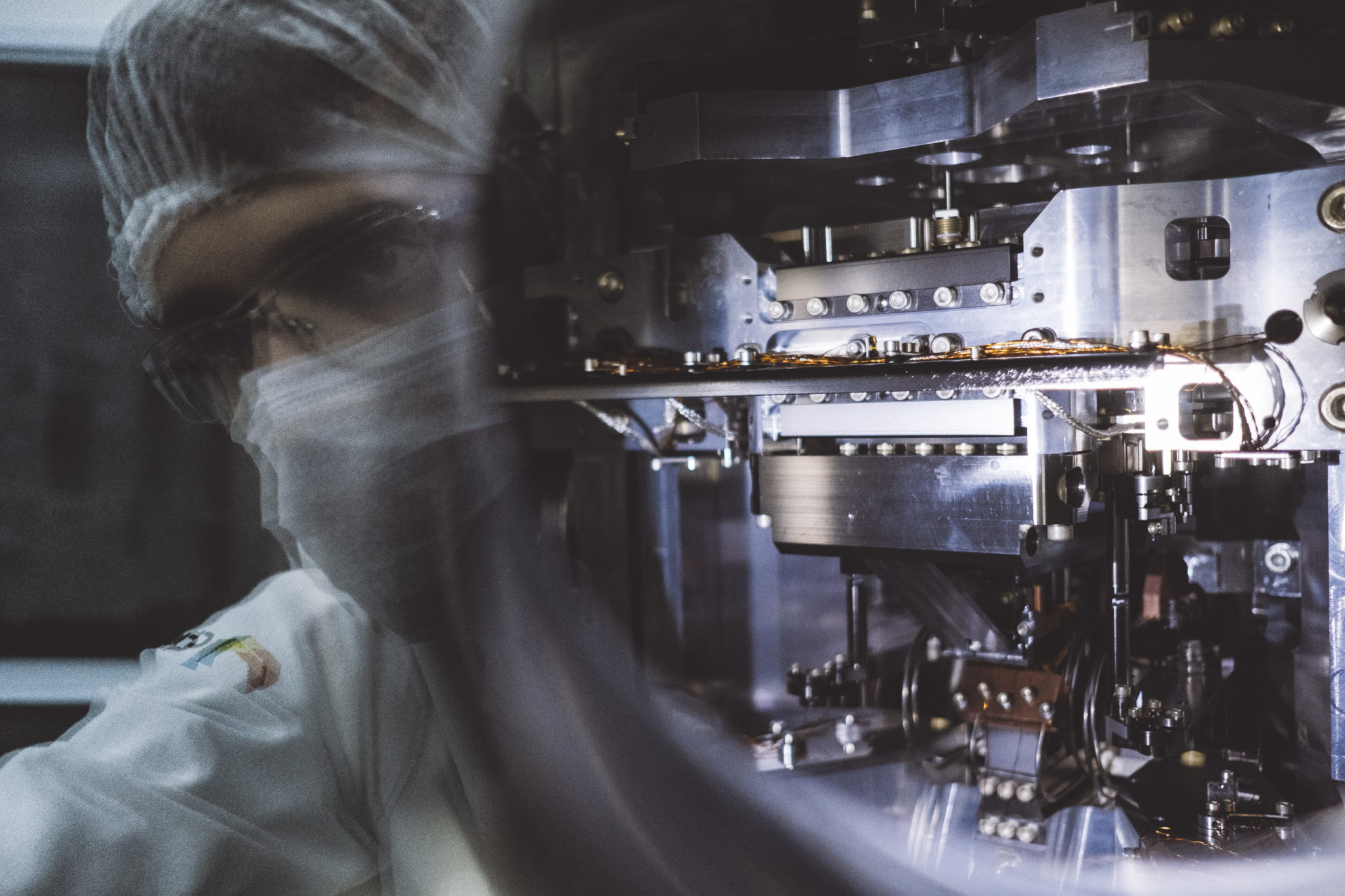
In a synchrotron light source, the more intense and focused the light produced, the greater the detail that is obtained on the analyzed sample. These qualities define the brilliance of the light source. The brighter the light, the greater the quality and variety of research that can be carried out at its research stations. Thus, there is a constant search for the construction of increasingly more brilliant light sources.
Sirius stands out for having the highest brilliance among the synchrotron light sources in the world in its energy range. For this reason, it allows experiments previously impossible in Brazil and, in some cases, worldwide.
In addition, this high brilliance allows experiments that are done today to be greatly improved, either by reducing data acquisition time, improving the accuracy of the results, or increasing the number of samples that can be analyzed in a given time.
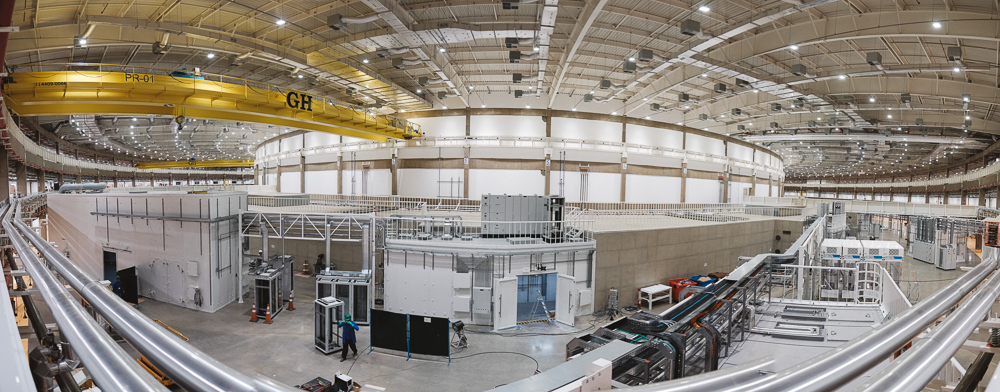
Named after Brazilian fauna and flora, Sirius’ beamlines are designed to house advanced scientific instrumentation, suitable for solving problems in strategic areas for Brazilian development. Fourteen beamlines are planned to cover a wide range of scientific programs as part of the first phase of operation of Sirius.
Of these 14 beamlines, six are in full operation, five are in scientific commissioning, two are under construction, and one is in the planning stage. In total, Sirius will be able to accommodate up to 38 beamlines, of which six are long beamlines, ranging from 100 to 150 meters in length.
In addition to allowing extremely advanced experiments, Sirius provides all the necessary infrastructure for researchers to carry out their investigations. To this end, support laboratories installed around the beamlines meet the demands of users regarding the preparation and conditioning of samples, the execution of controlled chemical reactions, and the use of equipment that may not be available at the researcher’s home institution.
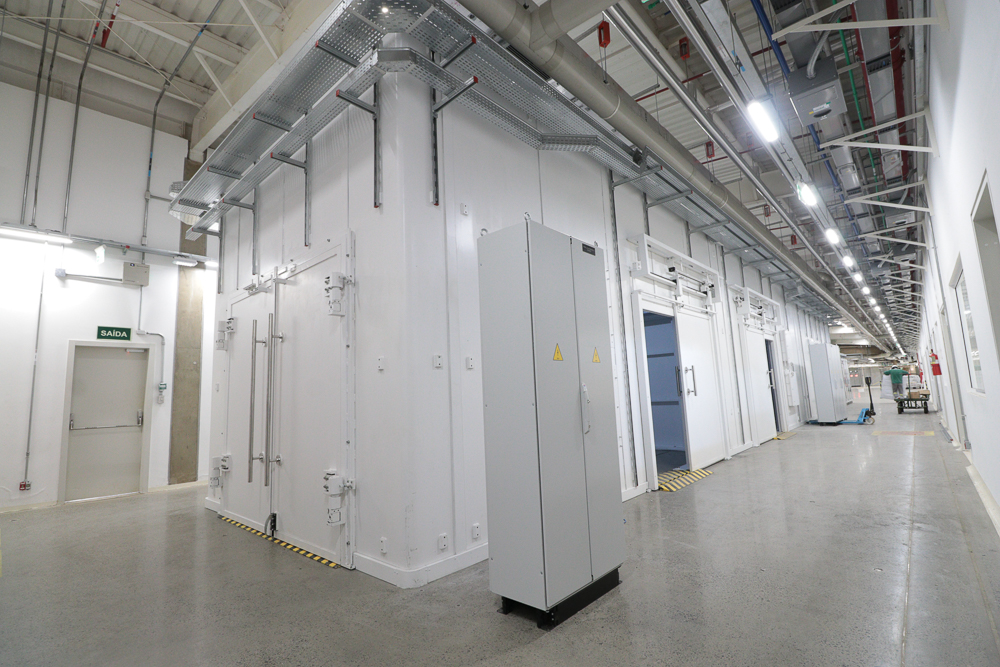
Carnaúba (Copernicia prunifera) is an endemic tree in northeastern Brazil, symbol of the state of Ceará and popularly known as the tree of life. The name comes from the tupi karana’iwa, “tree of the caraná”.
The soil is a heterogeneous combination of organic and inorganic compounds, immersed in aqueous solutions and amidst plant roots. The chemical, physical and biological processes that take place there at the atomic and molecular level control the transport and availability of nutrients. Thus, knowledge of this region on the nanoscale is essential to achieve more efficient and sustainable agricultural production.
In the CARNAÚBA beamline, analyses of the most diverse nano-structured materials can be performed, aiming at obtaining 2D and 3D images with nanometric resolution of the composition and structure of soils, biological materials, and fertilizers, for example, in addition to other investigations in the areas of environmental sciences. This is the longest beamline at Sirius, measuring 150 meters in length. The significant distance between the X-ray source and the sample allows for the production of a synchrotron light beam with a focus as small as 30 nanometers.
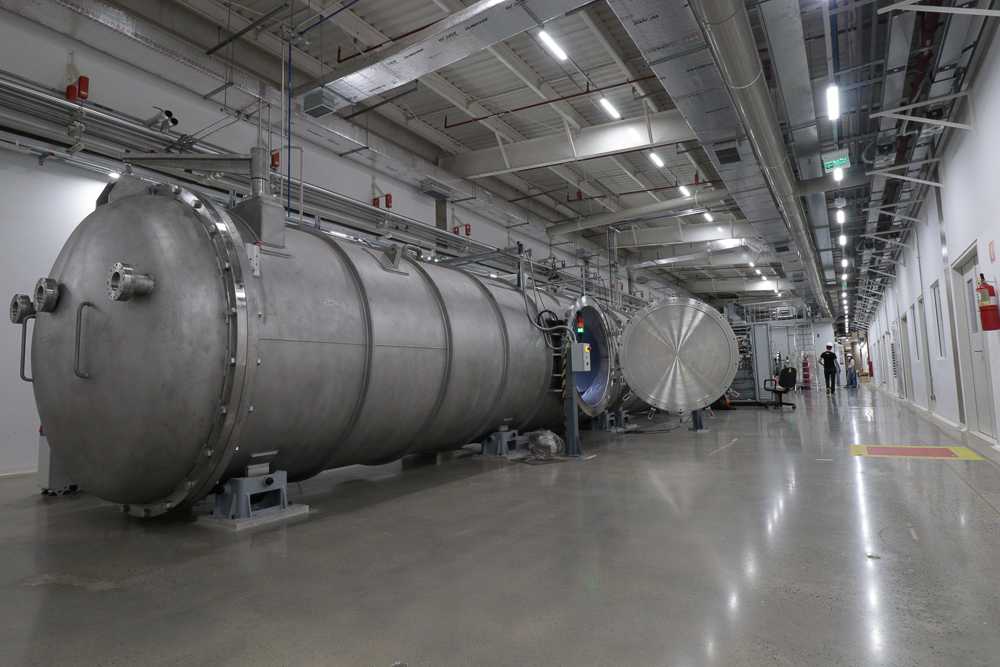
Cateretê, or white jacaranda (Machaerium vestitum), is a tree found in the southeastern and southern regions of Brazil.
Understanding problems related to life sciences and medicine involves the study of living beings on scales ranging from proteins and enzymes, active biological molecules and organelles, through cells, tissues and organs, to entire organisms.
The CATERETÊ beamline is optimized for obtaining three-dimensional images with nanometric resolution of materials of different sizes, from a macromolecule, tens of nanometers in size, to the millimetric tissues in which the macromolecule is found. Thus, this beamline allows the investigation of the dynamics of biological phenomena at different scales.
One of the main characteristics of CATERETÊ is its coherent X-ray beam focused on a region of about 40 micrometers. It makes possible to obtain images of mammalian cells of dozens of micrometers, in three dimensions, in a non-destructive way and in a liquid environment, similar to their natural environment.
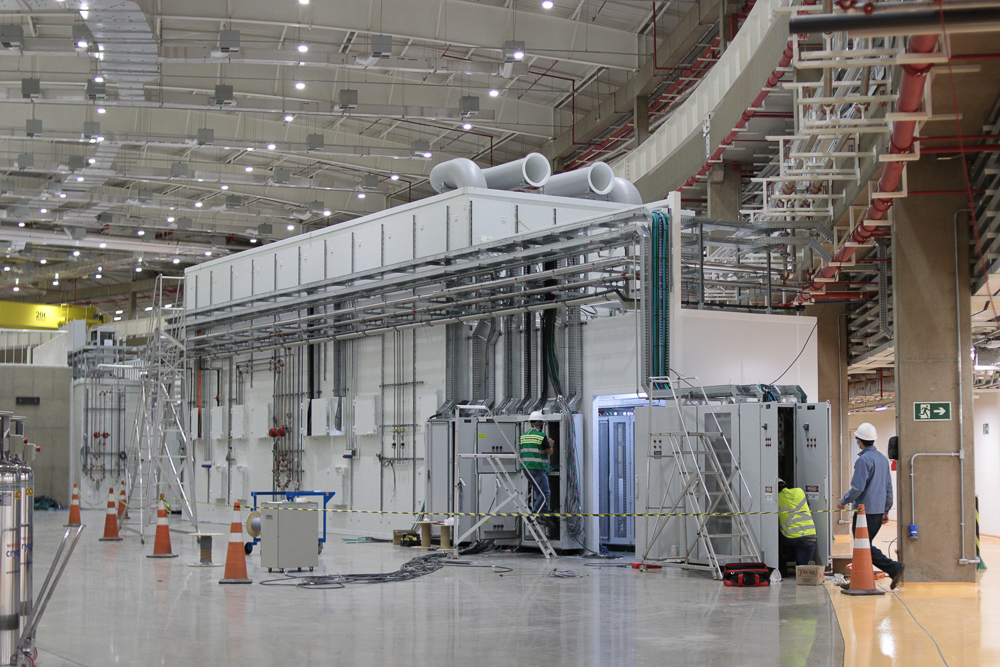
Ema (Rhea americana) is a flightless bird, native to South America and considered the largest Brazilian bird. The males of the species are responsible for the incubation and care of the young.
When matter is subjected to extreme conditions of temperature, pressure, or magnetic field, it can present new physical and chemical properties, for example, changing from conductor to insulator, from magnetic to non-magnetic, and vice versa.
The EMA beamline makes it possible to carry out experiments on samples of materials subjected to extreme conditions. The study of matter in these conditions allows investigating new materials with characteristics that do not exist under normal conditions. This is the case, for example, of superconducting materials, capable of conducting electrical currents without resistance, with the potential to revolutionize the transmission and storage of energy.
The simulated temperatures and pressures in this beamline, through heating by intense lasers and diamond anvil cells (DACs), can reach more than 8000 degrees celsius and pressures equivalent to the pressure at the center of the Earth, respectively. The magnetic fields, applied by superconducting magnets, can reach almost 14 tesla. Such conditions are only achievable in extremely small-scale environments and can only be unraveled by a high-brightness X-ray beam, such as the one produced by Sirius.
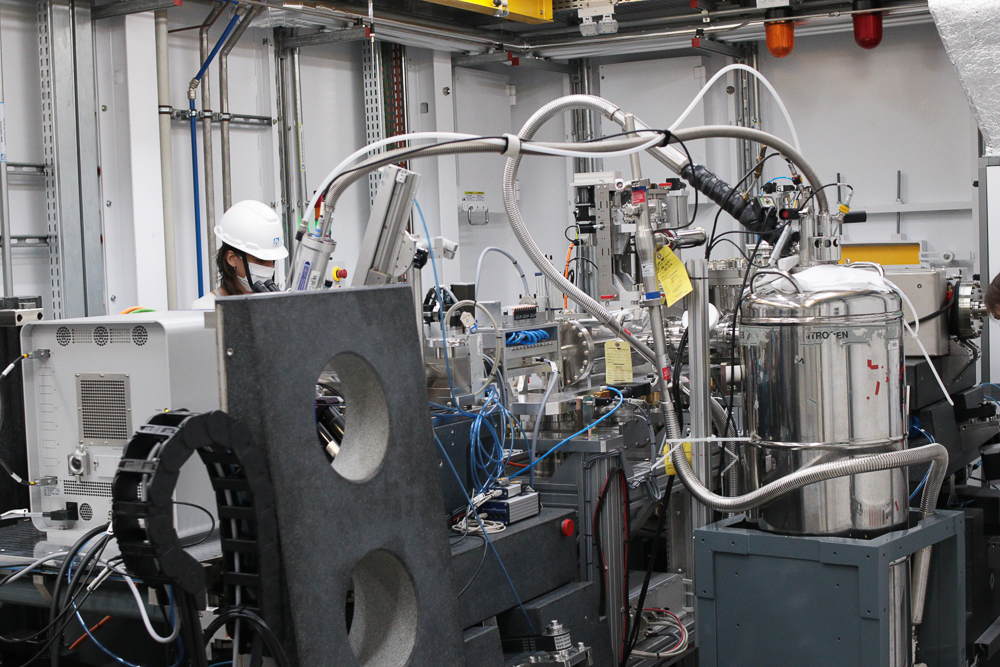
Manacá-de-cheiro is the name given to the tree of the Solanaceae family, found in the Brazilian Atlantic Forest. It is always surrounded by the manacá butterfly, an insect whose larvae only feed on the leaves of that plant.
When a molecule is identified as a therapeutic target, investigating its three-dimensional structure, i.e., the position of each of its constituent atoms, helps to understand its action in the organism and its interaction with potential drug candidates. This process allows for a more efficient search for new medications.
The MANACÁ beamline, through a technique called macromolecule crystallography, allows the study of the structure of human proteins and enzymes and pathogens with micrometric and submicrometric resolution, capable of guiding the development of potential new drugs or the understanding of the functioning of known drugs to increase their effectiveness. Information on the structure of proteins is important not only in health, but also for the development of biofuels, pesticides, food, and cosmetics.
MANACÁ is especially dedicated to the new method of serial crystallography, which will allow the elucidation of the most complex protein structures, which cannot be unraveled by conventional crystallography.
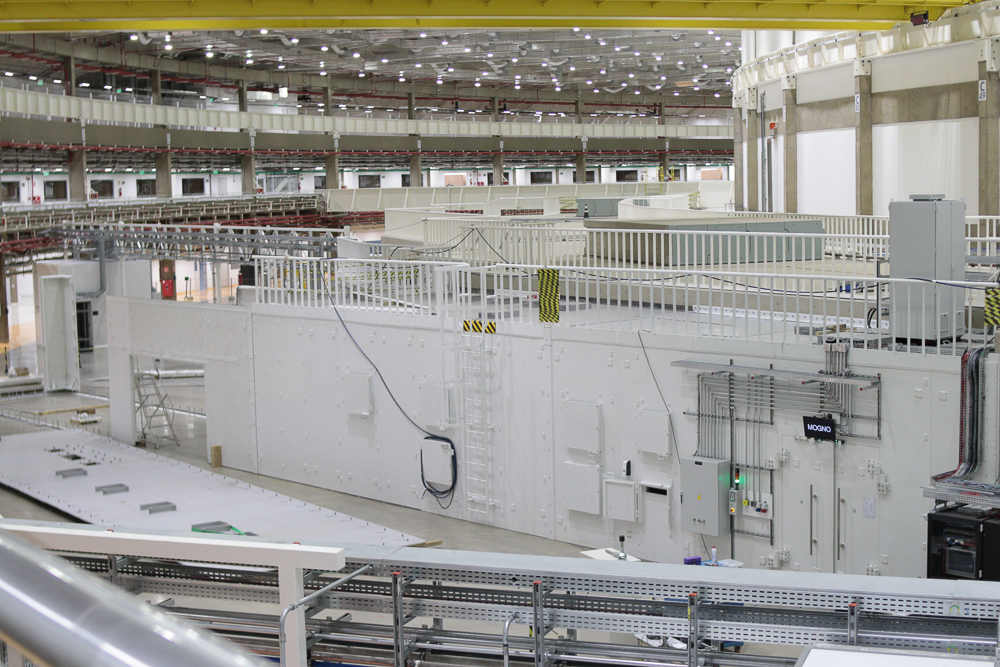
Mogno, or Brazilian mahogany is the popular name for the species Swietenia macrophylla, native to the Amazon. It is a reddish-brown wood tree which currently exists only in difficult to access regions and in protected areas.
Brazil is a pioneer country in the exploration of oil in deep waters. However, a significant amount of this fossil fuel is stored in the porous space of carbonate rocks, especially in the pre-salt layer. These rocks are highly heterogeneous and have complex pore systems, which need to be well understood to make oil and gas exploration more efficient.
The MOGNO beamline is dedicated to obtaining three-dimensional tomographic images with micro and nanometric resolution. Internal structures of various materials can be studied non-invasively at different spatial scales, ranging from hundreds of nanometers to tens of micrometers. Additionally, materials can be subjected to different mechanical, thermal, or chemical conditions, and their changes can be monitored in real-time. As a result, MOGNO allows for detailed studies of complex phenomena, such as the flow of fluids through the pores of pre-salt rocks.
Furthermore, various other types of materials can be studied at this beamline, including soils, fossils, materials for electronic devices, products of chemical reactions, and biological samples.
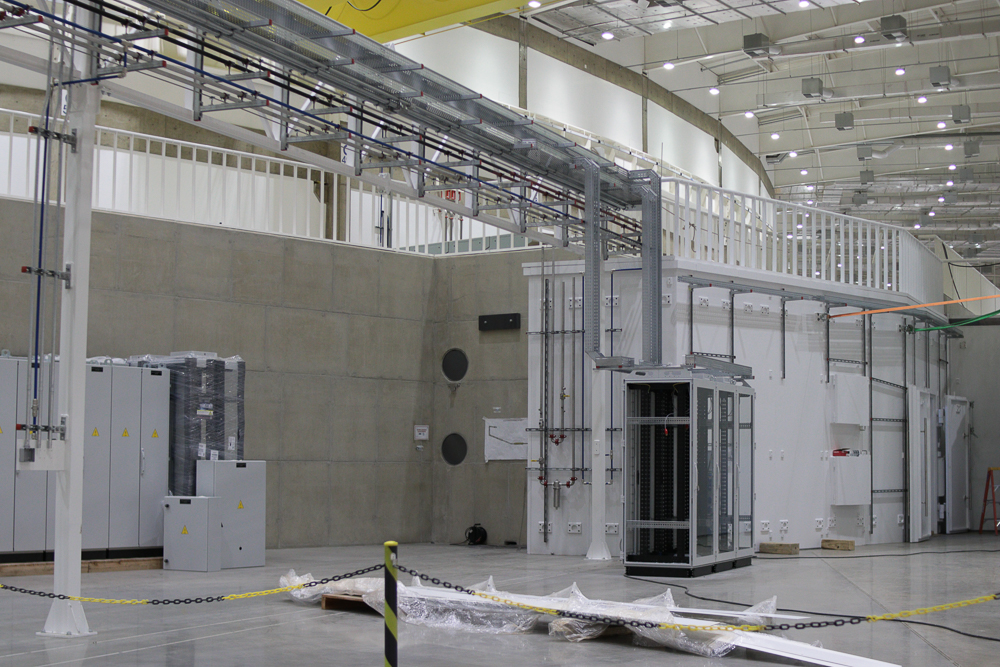
Ipê is the popular name for several species of trees of the genus Handroanthus. It disputes the position of the Brazil’s symbolic tree with Pau-Brasil. Its name comes from the Tupi language and means thick bark tree.
When atoms come together to form solid and liquid materials, the interaction between their electrons can give rise to properties that are very different from the individual characteristics of each constituent element. These properties define how materials conduct heat, electricity, magnetism, sound, light, and more. Precise knowledge of these interactions aids in the development of new technologies for information storage and transport, high-efficiency electronics, and many other applications.
The IPÊ beamline is dedicated to studying the distribution of electrons in atoms and molecules present in liquid, solid, and gas interfaces and how it affects the properties of materials. As a result, IPÊ allows for investigations into how chemical bonds occur at the interfaces of materials like catalysts, electrochemical cells, materials subject to corrosion, or how electric current propagates in different materials, from insulators to superconductors.
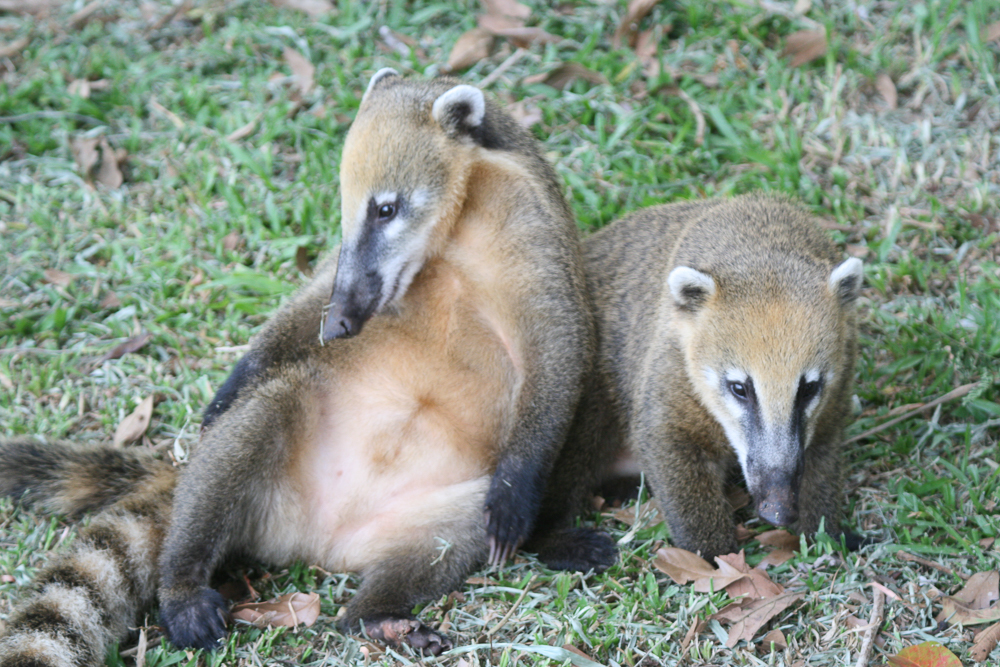
Quatis are diurnal mammals of the genus Nasua, common from South America to southern North America. Quatis are known for the fact that females live in groups, while adult males are solitary.
Catalysts are substances used as facilitators of chemical reactions in virtually all industrial processes that involve the transformation of primary products. The search for more efficient and accessible catalysts impacts not only the economy but also the environment and the quality of life of populations.
However, this investigation requires that catalysts be studied under the same conditions in which they will be applied, typically at high temperatures and pressures, in the presence of different gases, among other variables. Thus, sophisticated scientific equipment is necessary for conducting this research.
The QUATI beamline will enable real-time analysis of a wide variety of physical and chemical processes that occur on the millisecond time scale, making it possible to track, for example, the structural changes that occur in materials during chemical reactions related to the functioning of catalysts.
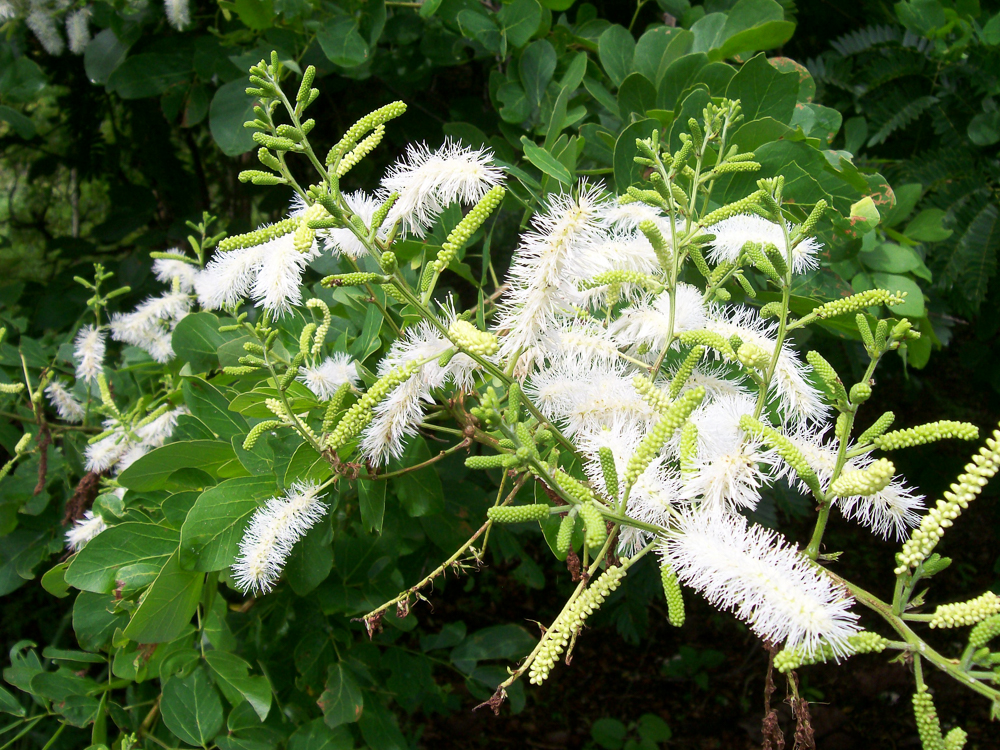
Sabiá (Mimosa caesalpiniaefolia) is a tree found natively in the Northeast Region and in part of the North Region of Brazil, which is cultivated for the durability of its wood. Its leaves are also used as food for animals in times of water scarcity.
Magnetic materials form the basis of a wide variety of technologies, from headphones to hard drives for data storage. This diversity of applications drives active research into innovative magnetic materials, for example, for drug delivery directly to tumor areas, the development of more compact and energy-efficient electronic devices, or for the so-called magnetic refrigeration, which has the potential to replace technology based on environmentally harmful gases, among other applications.
The study of magnetic materials involves understanding previously unknown and fundamental aspects of magnetism. Therefore, the SABIÁ beamline is optimized for investigating the structural and magnetic properties of these materials, especially their surfaces and interfaces. SABIÁ enables magnetic measurements with sensitivity to identify the chemical elements composing the sample and responsible for its magnetism.

Paineira is the popular name for several species of the Ceiba genus. Its seeds are wrapped in fine white fibers, called paina, and are used to fill pillows and plush toys.
The search for clean, renewable, and affordable energy sources has intensified in recent years, with a growing consensus that the rise in the planet’s average temperature and the consequent intensification of extreme weather events are caused by human activities. However, it is essential that this search be accompanied by the development of new efficient and low-cost energy storage systems capable of competing with the use of fossil fuels.
Among these new storage systems are, for example, the so-called lithium-air batteries. These batteries store electrical energy through the reaction between lithium and oxygen and have a higher storage capacity compared to commercially used batteries such as lithium-ion batteries. However, one of the main challenges for the development of more efficient batteries lies in understanding the correlation between the structure of the materials that compose them and the performance of these devices.
The PAINEIRA beamline allows the study of structural changes in materials that make up energy storage devices under operating conditions, i.e., during battery charge and discharge cycles.
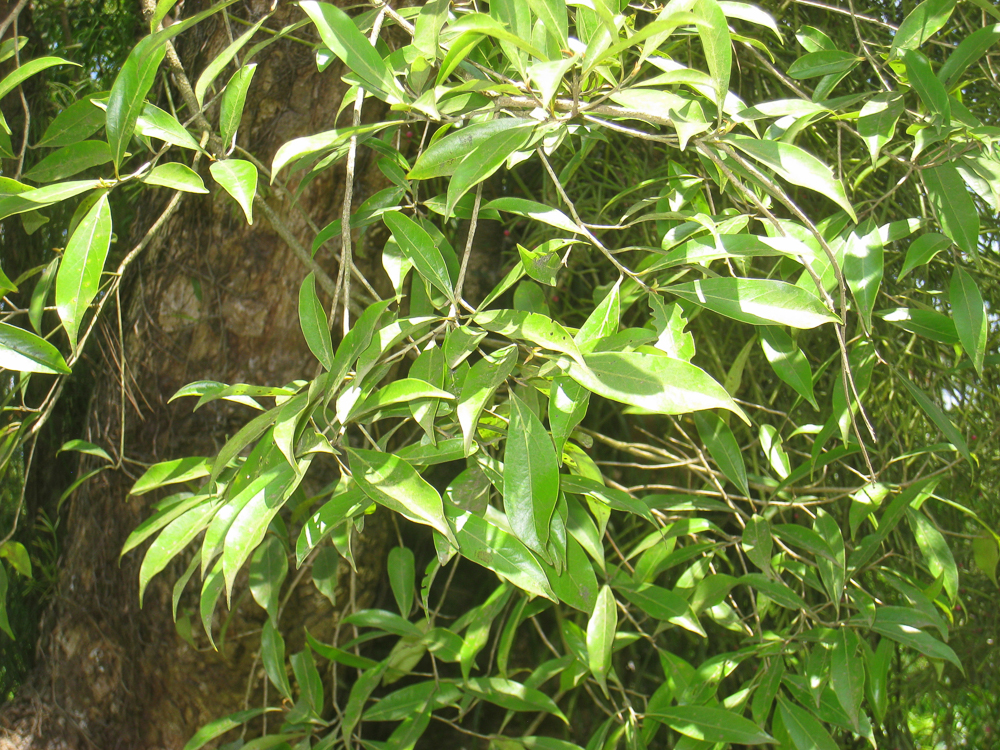
Imbúia is the popular name of the species Ocotea porosa, typical of the araucaria forests of southern Brazil. Previously abundant, Imbuia is a threatened species due to the predatory exploitation of its high-quality wood.
Investigations of morphology and chemical composition are essential for understanding the physiology of biological systems at various levels, and conducting these studies in systems similar to biological fluids allows for obtaining representative information about how these systems function in their natural environments. For the analysis of an isolated blood cell, for example, it is ideal to use a fluid that replicates its natural environment, namely, blood. This way, the results, even in a research setting, will be representative for clinical or pharmaceutical applications.
The IMBUIA beamline is dedicated to experiments using infrared light, which enables the identification of functional groups of molecules and the analysis of the composition of virtually any material, with nanometric resolution. IMBUIA thus allows for cutting-edge research in both new synthetic materials and the understanding of natural materials, such as biological samples.
In this beamline, chemical mapping of tissues and biological systems of millimetric dimensions can be carried out, with a spatial resolution of a few micrometers. Specifically, it enables chemical analysis of isolated animal cells within the context of local chemical reactions and the delivery of nanopharmaceuticals to specific cell organelles or regions.
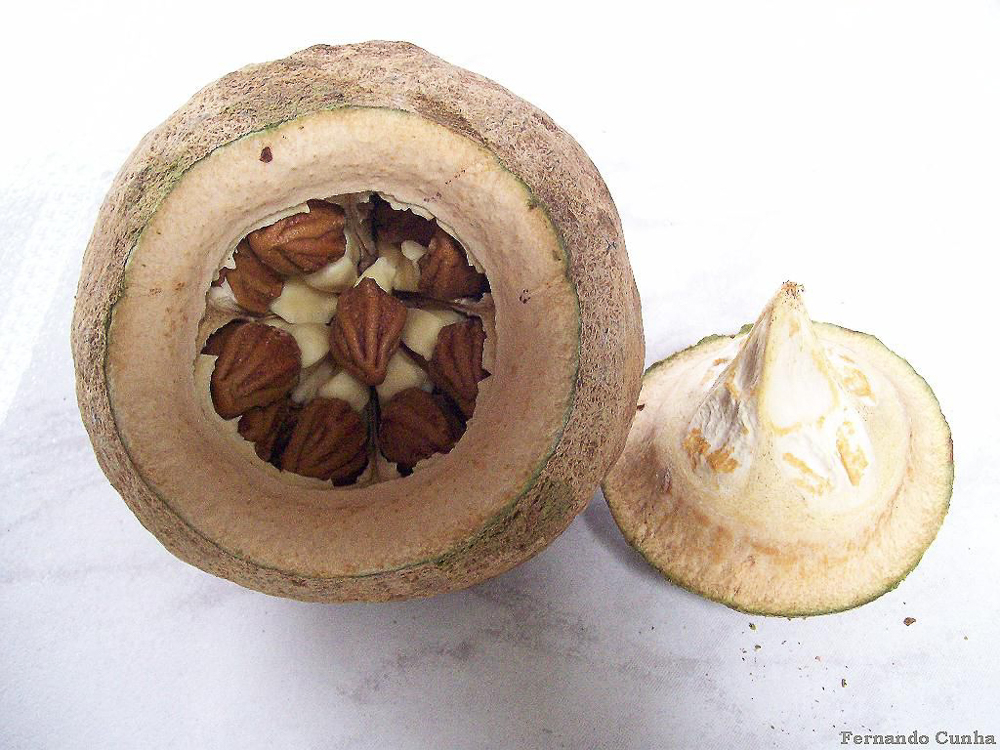
Sapucaia is the popular name of the species Lecythis pisonis, common in the Amazon Forest and the Atlantic Forest. Its fruit is hard and contains small chestnuts, much appreciated by monkeys.
Nanoparticles, due to their extremely small size and adaptable properties for various applications, have attracted attention from diverse areas of research. The perfomance of these tiny particles can be controlled through their composition, size, and shape. For instance, nanoparticles can be used as carriers that deliver medications directly to diseased cells, such as in cancer treatment, or in combating viruses and antibiotic-resistant bacteria.
The SAPUCAIA beamline will enable investigations on the shape, organization, and dynamics of nanoparticles across a wide range of research fields in physics, chemistry, biology, and industrial applications.
SAPUCAIA will also provide answers to various questions related to life sciences (biological and medical applications), structural biology (proteins, lipids, macromolecules), and a vast field of materials science, including nanotechnology, polymers, catalysis, rheology, and environmental sciences.
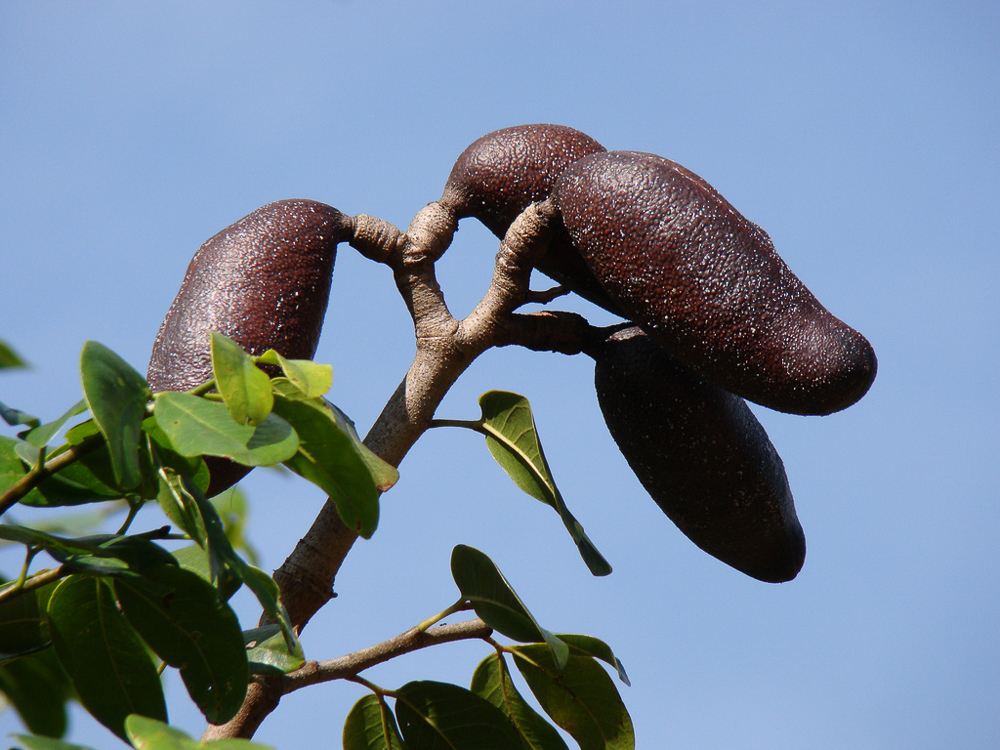
Jatobá is the popular name for trees of the genus Hymenaea L., common throughout Latin America and, especially, in the Amazon Forest. Its name can be translated from the Tupi as “tree of hard fruits”.
Complex materials are characterized by the fact that their properties and functionalities depend on the organization and interaction of their structures at various length scales, from the atomic structure, through the nanometric, mesoscopic and macroscopic scales.
Such materials play a central role in modern society and are found, for example, in batteries, electronic devices, industrial processes, and many other applications. Understanding the atomic-level structure of these materials is of particular interest to science, as the macroscopic physical properties are a reflection of the cumulative effect of various interactions between nearby atoms, known as the local structure.
The JATOBÁ beamline will be dedicated to experiments aimed at determining the structure of materials, from their local structure (chemical bond lengths and interatomic distances) to the shape and size of nanostructures, both in crystalline and non-crystalline materials, such as liquids, amorphous materials, and nanoparticles. The JATOBÁ beamline will also allow for time-resolved experiments to analyze the kinetics of structural changes that occur in complex materials when subjected to external stimuli.
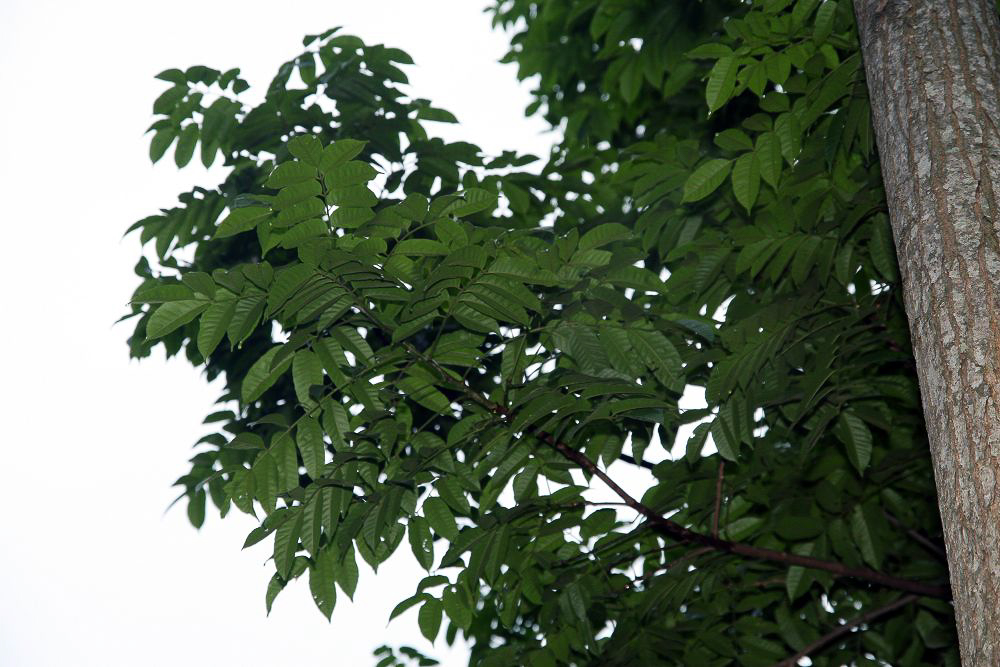
Brazilian cedar or fragrant cedar (Cedrela odorata) is a tree of great natural distribution, which in Brazil occurs in the Atlantic Forest, in the Amazon and even in the Caatinga biome. Its name is due to the good quality of its wood and the characteristic odor, similar to the original cedar, known as Lebanon cedar.
Proteins are biological macromolecules formed by chains of smaller molecules called amino acids. After their formation, the chain of amino acids folds and twists upon itself, acquiring a specific shape, known as secondary and tertiary structures, which enables their function in the organism. Investigating the three-dimensional structure of a protein or enzyme allows us to understand its action and its interactions with other molecules.
Understanding how these structures behave in the biological environment and how protein-drug complexes form enables the solution of various medical and scientific problems.
The CEDRO beamline allows the investigation of the secondary structure of proteins and protein-drug complexes, identification of disordered regions in these proteins, and analysis of protein interactions with small molecules, which will contribute to drug development. In addition, CEDRO allows measurements to be carried out under conditions similar to those found in the biological environment where these molecules are present.
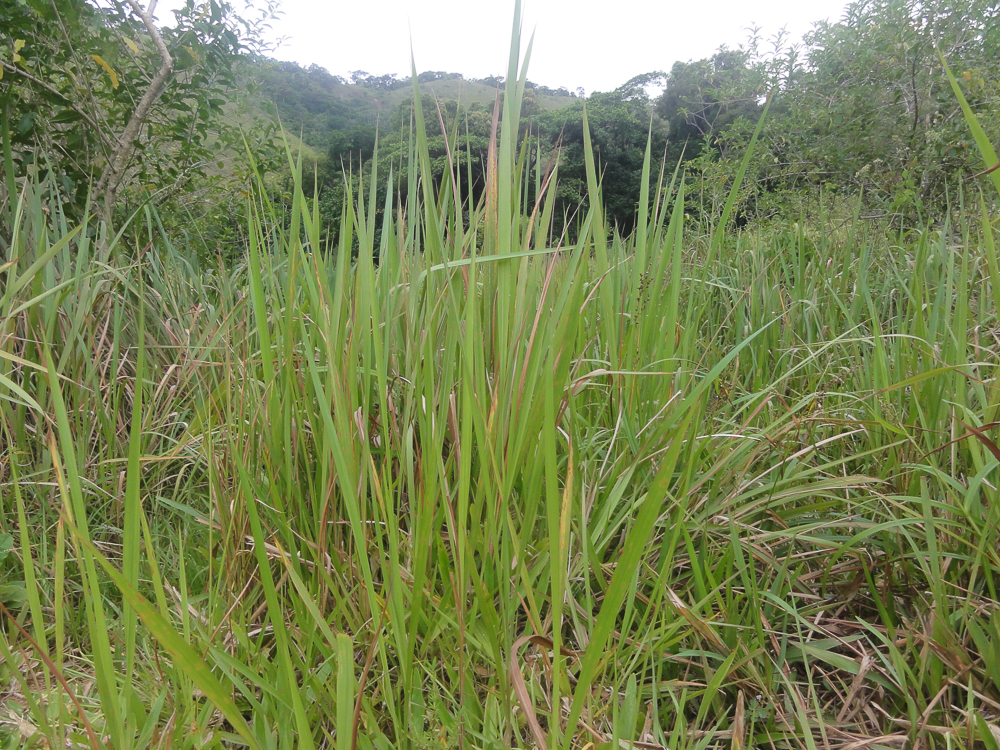
Sapê is the popular name for the grass Imperata brasiliensis whose stems, after being dried, are used to build the roof of rustic houses. Its name derives from the tupi word ssa’pé, “that which iluminates”, in reference to its easy burning.
The development of increasingly powerful and efficient electronic devices requires the continuous miniaturization of their components. To achieve this, there is a constant search for materials with suitable structural, electronic, and optical properties.
An example of these new materials are the so-called topological insulators. These materials have the special characteristic of being electrical insulators in their inner volume and, at the same time, electrical conductors on their surfaces with low electrical resistance. In addition, these materials would allow the construction of extremely robust transistors and quantum memory bits, helping in the evolution of quantum computing, which would revolutionize data processing speeds.
One example of these new materials is called topological insulators. These materials have the special characteristic of being electrical insulators in their inner volume and, at the same time, electrical conductors on their surfaces with low electrical resistance. Additionally, these materials enable the construction of extremely robust transistors and quantum memory bits, helping to leverage quantum computing, which can lead to a revolution in data processing speed.
The SAPÊ beamline is dedicated to the study of the electronic structure of these topological insulators and a wide variety of other materials. It allows investigations, for example, into the properties of superconductors, graphene, and the study of electronic states at interfaces between solids and ultra-thin films.